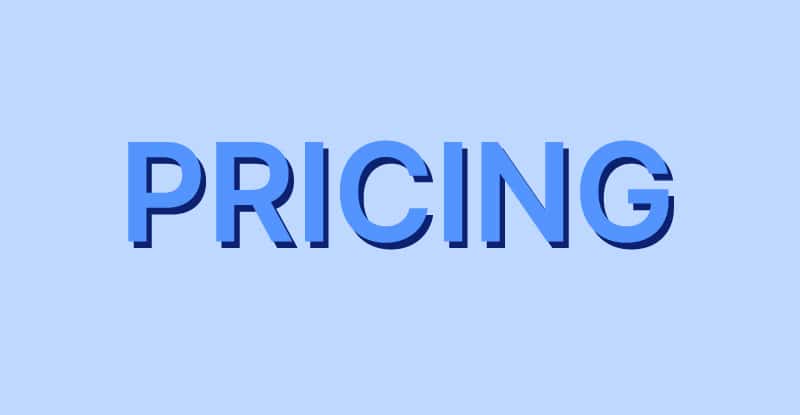
Concept Testing and Product Testing
Concept Testing and Product Testing Voxco is trusted by 450+ Global Brands in 40+ countries Table of Contents Customers are becoming more skeptical as well

Find the best survey software for you!
(Along with a checklist to compare platforms)
Take a peek at our powerful survey features to design surveys that scale discoveries.
Explore Voxco
Need to map Voxco’s features & offerings? We can help!
Find the best customer experience platform
Uncover customer pain points, analyze feedback and run successful CX programs with the best CX platform for your team.

We’ve been avid users of the Voxco platform now for over 20 years. It gives us the flexibility to routinely enhance our survey toolkit and provides our clients with a more robust dataset and story to tell their clients.
Steve Male
VP Innovation & Strategic Partnerships, The Logit Group
Explore Regional Offices

Find the best survey software for you!
(Along with a checklist to compare platforms)
Take a peek at our powerful survey features to design surveys that scale discoveries.
Explore Voxco
Need to map Voxco’s features & offerings? We can help!
Find the best customer experience platform
Uncover customer pain points, analyze feedback and run successful CX programs with the best CX platform for your team.

We’ve been avid users of the Voxco platform now for over 20 years. It gives us the flexibility to routinely enhance our survey toolkit and provides our clients with a more robust dataset and story to tell their clients.
Steve Male
VP Innovation & Strategic Partnerships, The Logit Group
Explore Regional Offices

Find the best survey software for you!
(Along with a checklist to compare platforms)
Take a peek at our powerful survey features to design surveys that scale discoveries.
Explore Voxco
Need to map Voxco’s features & offerings? We can help!
Find the best customer experience platform
Uncover customer pain points, analyze feedback and run successful CX programs with the best CX platform for your team.

We’ve been avid users of the Voxco platform now for over 20 years. It gives us the flexibility to routinely enhance our survey toolkit and provides our clients with a more robust dataset and story to tell their clients.
Steve Male
VP Innovation & Strategic Partnerships, The Logit Group
Explore Regional Offices
SHARE THE ARTICLE ON

Leading retailers often use price to position their brands against the competition in the market. They reduce the price as they believe this will help them boost the customers’ perceived value of the product. However, they often forget that – Will the customers respond as the brands expect them to?
Customers consider price as a driving factor in their purchase decision. It is as essential as the quality of the product. Price communicates to customers about the value the product brings. A dollar-store cosmetic brand shouldn’t sell its perfume at the same price as a luxury brand. The price would signal a premium product which would lead to the brand losing existing customers while also being unable to compete with high-end brands. How can you determine the best price of your product that customers would be willing to pay and also see value in? Our blog on market research is an answer to this question; Pricing Surveys.
Pricing surveys help brands, and their product researchers use research methods to determine the best price to sell their products and services. In a pricing survey methodology, you can ask questions to your target customers and gather their insights on the following:
A product pricing survey helps you understand your target customers and the optimal price and identify the impactful features of the product. It provides you with the data you need to make informed decisions.
The data helps you make pricing strategy decisions for the new products and also on any price changes required for the existing product. And when used correctly, it can help you predict the impact of the price on your revenue by gauging the customer’s perception of the price.
Luc Milbergue, CEO, Stratégir
Read how Voxco helped Stratégir to expand its data collection.
Customers will never want to pay more if getting the product at a lower price is feasible. So, it’s complicated to decide the right price for the product.
There are four commonly used pricing survey methodologies that help you gain insight into your pricing strategy. Let’s look at these four pricing surveys in detail.
Question: “How much would you be willing to pay for [product name]?”
WIP, or willingness to pay, informs you of the price or price range that your target customers would be willing to pay for a particular product/service.
In this pricing survey, you need to offer the product details to the respondent and then ask the WIP question. The question is clear and straightforward and gathers precise data, which is easy to evaluate.
Depending on the research needs, you can ask an open-ended or closed-ended question.
While this question can help you understand how much a customer is willing to pay, it is best not to use it alone. The question doesn’t offer context on how high or low you can set the price before you lose customers.
The following three pricing survey methodology can help determine customers’ willingness to pay.
Peter Van Westendorp, a Dutch economist, developed a pricing survey methodology, which is known as Van Westendorp Price Sensitivity Meter. This pricing model uses four product pricing survey questions to help you gauge customers’ perception of the product’s value.
Brands use these four pricing survey questions to identify a range of price points that are crucial to the target customers.
Here are the four questions you can use in your pricing survey:
When you use the data collected in context to these questions, you can determine the optimal price points. You can also uncover the position price, the acceptable price, and the premium price.
The advantage of using this pricing strategy survey questions is that the questions are easy to respond to, and the data is easy to analyze. Moreover, the model offers the flexibility of identifying a series of price points to help you decide the optimal price that brings the highest profit.
The Gabor-Granger pricing method helps you establish the best acceptable price for the product by determining its price flexibility. British economists Andre Gabor and Clive Granger ask the likelihood of purchasing questions at different prices.
Using the data collected from a series of the likelihood of purchasing survey questions you can plot demand and revenue curves to determine the best price that brings maximum revenue.
Let’s see how you can use this type of question.
Question: How likely are you to purchase our subscription package at $350/month?
This pricing model requires you to ask the same question at multiple price points. So, use online survey tools that offer the functionality skip logic to ask follow-up questions based on the answer you receive.
For example, start with a price at which you would like to position the product. Now, if the respondent selects any of the bottom three responses, you can ask the same question at a lower price. However, if the respondent selects the top two responses, you can use the top-2-box score analysis.
In this pricing survey methodology, you can effectively evaluate customers’ perception of value for certain features or attributes of the products/services. The conjoint analysis brings the element of real-life shopping experiences in online surveys. It helps you identify which feature has the most impact on customers’ purchase decisions.
This product pricing survey question offers respondents a number of combinations with product features or attributes (including price). The question then asks respondents to choose between the different combinations.
A conjoint analysis pricing survey question may look like this:
Question: If you were shopping for a new smartphone, which would be most appealing to you?
Brand | Brand 1 | Brand 2 | Brand 3 |
Rear Camera | 5MP + 8MP | 8MP+10MP+12MP | 10MP+12MP |
Ram | 6GB | 8 GB | 8GB |
Display | 5 inch | 6.10 inch | 6.60 inch |
Price | $350.99 | $679.99 | $ 549 |
The most effective way to determine the appropriate price is to gather feedback from target customers using pricing surveys. Conducting pricing surveys is important in market research for several reasons, including:
Gather data on how much customers are willing to pay for your products and services to understand their sensitivity toward the price range. You can use the knowledge to inform and optimize pricing strategies to maximize revenue.
Using the various pricing survey methodologies mentioned above, you can identify the features or attributes for which customers are willing to pay more. This insight can help you adjust the price, demonstrate value, and remain competitive in the saturated market. You can introduce pricing tiers that offer customers additional features.
Say a survey software vendor uses the pricing survey to determine the proper survey software pricing before launching it as a mobile app.
So, let’s look at these examples of product pricing survey questions:
– Understand the perceived value of your product and the price point customers are willing to pay. The question helps you identify the acceptable price point for the product.
– Understand how your competitors position their products in the market and compare the difference. Use the insight to thoroughly analyze what drives the price difference and adjust it accordingly to remain competitive.
– Use this question to gain insight into how price-sensitive your target audience is. You can adjust the price to increase sales.
– This question can help you identify features and attributes that would make customers pay more.
– This question will help identify the lowest price limit or range below which you will lose customers.
Pricing surveys are valuable for businesses looking to make informed pricing strategies for their products/services. Gather data on customers’ perception of the product’s value, their willingness to pay, and the acceptable range of price to remain competitive in the industry.
Pricing surveys can help you understand customers’ purchase behavior and the driving factors impacting purchasing decisions. The insight enables you to build price tiers or decide on positioning prices that will maximize the business profit.

Concept Testing and Product Testing Voxco is trusted by 450+ Global Brands in 40+ countries Table of Contents Customers are becoming more skeptical as well

MASTER DATA SHARE THE ARTICLE ON Share on facebook Share on twitter Share on linkedin Table of Contents The term “master data” refers to “data

Less than five years ago, the talk began about the full integration of passive digital data collection (mostly framed as ‘Big Data’) into business insights

Hypothesis Transform your insight generation process Use our in-depth online survey guide to create an actionable feedback collection survey process. Download Now SHARE THE ARTICLE

Digital Commerce SHARE THE ARTICLE ON Share on facebook Share on twitter Share on linkedin Table of Contents People, processes, and technology to execute the

Market research and the process of gleaning insights is evolving. With AI and Automation becoming increasingly common in most verticals, it was only a matter of time before they started to play a major role in research as well.
We use cookies in our website to give you the best browsing experience and to tailor advertising. By continuing to use our website, you give us consent to the use of cookies. Read More
| Name | Domain | Purpose | Expiry | Type |
|---|---|---|---|---|
| hubspotutk | www.voxco.com | HubSpot functional cookie. | 1 year | HTTP |
| lhc_dir_locale | amplifyreach.com | --- | 52 years | --- |
| lhc_dirclass | amplifyreach.com | --- | 52 years | --- |
| Name | Domain | Purpose | Expiry | Type |
|---|---|---|---|---|
| _fbp | www.voxco.com | Facebook Pixel advertising first-party cookie | 3 months | HTTP |
| __hstc | www.voxco.com | Hubspot marketing platform cookie. | 1 year | HTTP |
| __hssrc | www.voxco.com | Hubspot marketing platform cookie. | 52 years | HTTP |
| __hssc | www.voxco.com | Hubspot marketing platform cookie. | Session | HTTP |
| Name | Domain | Purpose | Expiry | Type |
|---|---|---|---|---|
| _gid | www.voxco.com | Google Universal Analytics short-time unique user tracking identifier. | 1 days | HTTP |
| MUID | bing.com | Microsoft User Identifier tracking cookie used by Bing Ads. | 1 year | HTTP |
| MR | bat.bing.com | Microsoft User Identifier tracking cookie used by Bing Ads. | 7 days | HTTP |
| IDE | doubleclick.net | Google advertising cookie used for user tracking and ad targeting purposes. | 2 years | HTTP |
| _vwo_uuid_v2 | www.voxco.com | Generic Visual Website Optimizer (VWO) user tracking cookie. | 1 year | HTTP |
| _vis_opt_s | www.voxco.com | Generic Visual Website Optimizer (VWO) user tracking cookie that detects if the user is new or returning to a particular campaign. | 3 months | HTTP |
| _vis_opt_test_cookie | www.voxco.com | A session (temporary) cookie used by Generic Visual Website Optimizer (VWO) to detect if the cookies are enabled on the browser of the user or not. | 52 years | HTTP |
| _ga | www.voxco.com | Google Universal Analytics long-time unique user tracking identifier. | 2 years | HTTP |
| _uetsid | www.voxco.com | Microsoft Bing Ads Universal Event Tracking (UET) tracking cookie. | 1 days | HTTP |
| vuid | vimeo.com | Vimeo tracking cookie | 2 years | HTTP |
| Name | Domain | Purpose | Expiry | Type |
|---|---|---|---|---|
| __cf_bm | hubspot.com | Generic CloudFlare functional cookie. | Session | HTTP |
| Name | Domain | Purpose | Expiry | Type |
|---|---|---|---|---|
| _gcl_au | www.voxco.com | --- | 3 months | --- |
| _gat_gtag_UA_3262734_1 | www.voxco.com | --- | Session | --- |
| _clck | www.voxco.com | --- | 1 year | --- |
| _ga_HNFQQ528PZ | www.voxco.com | --- | 2 years | --- |
| _clsk | www.voxco.com | --- | 1 days | --- |
| visitor_id18452 | pardot.com | --- | 10 years | --- |
| visitor_id18452-hash | pardot.com | --- | 10 years | --- |
| lpv18452 | pi.pardot.com | --- | Session | --- |
| lhc_per | www.voxco.com | --- | 6 months | --- |
| _uetvid | www.voxco.com | --- | 1 year | --- |